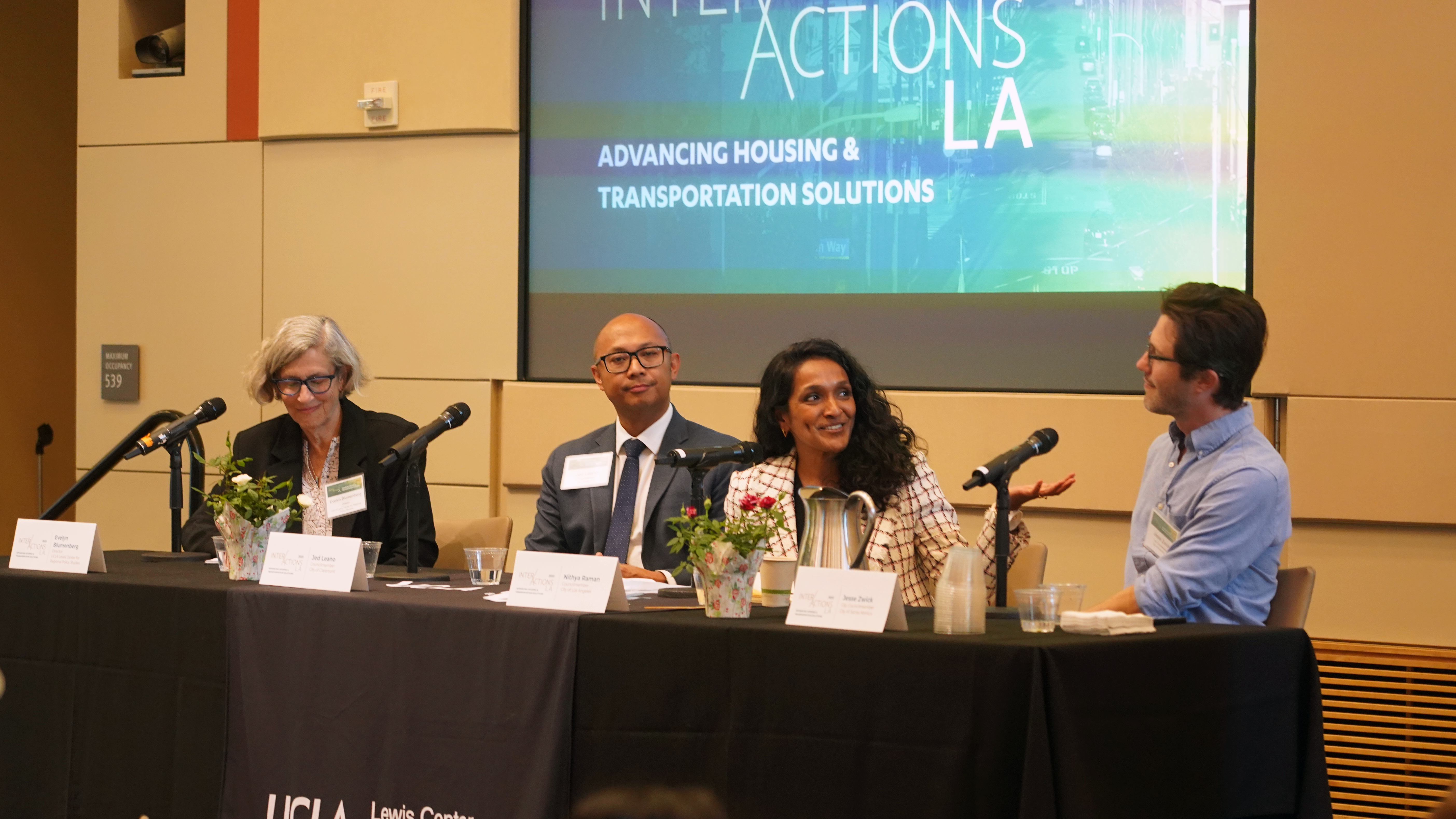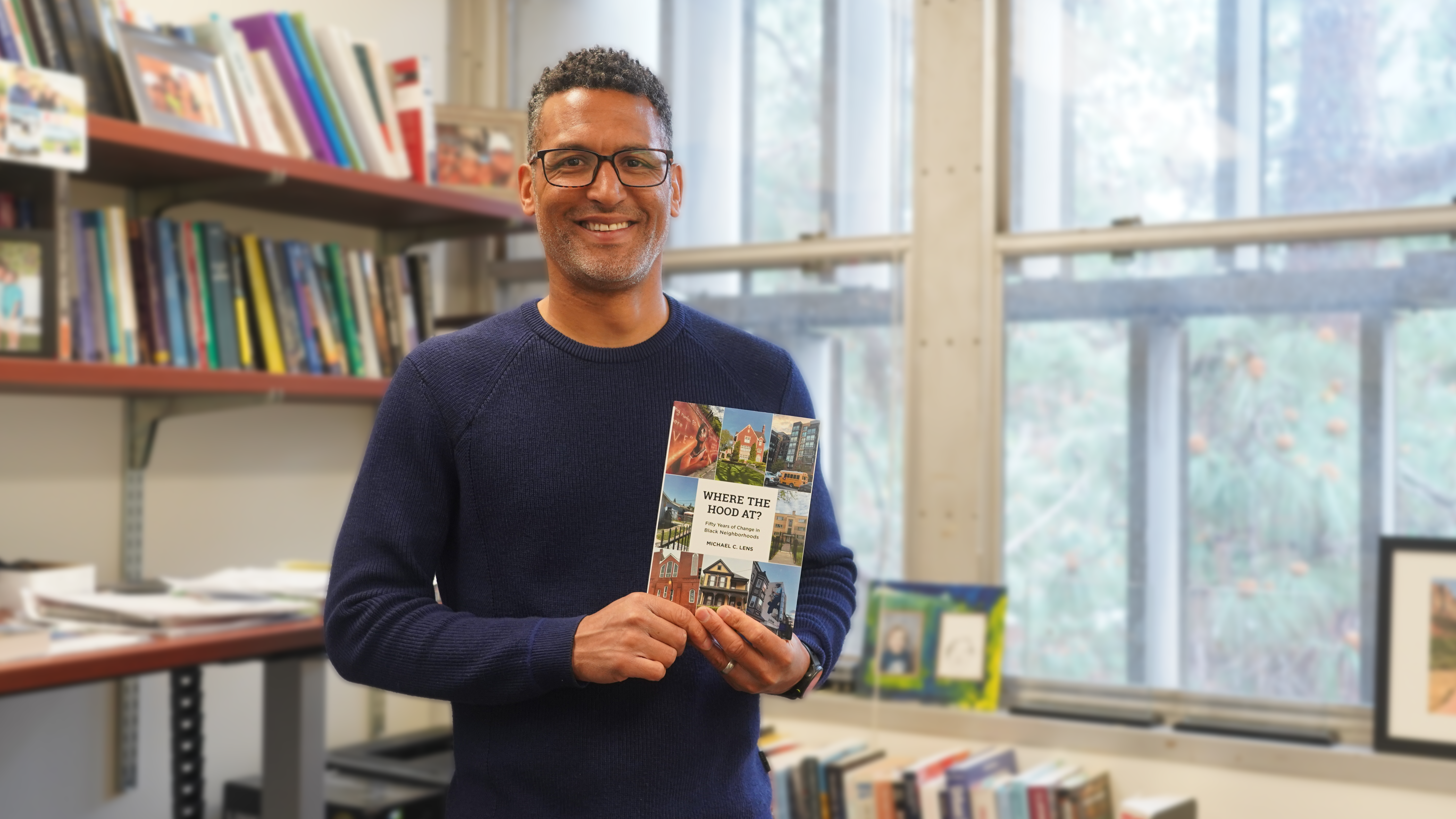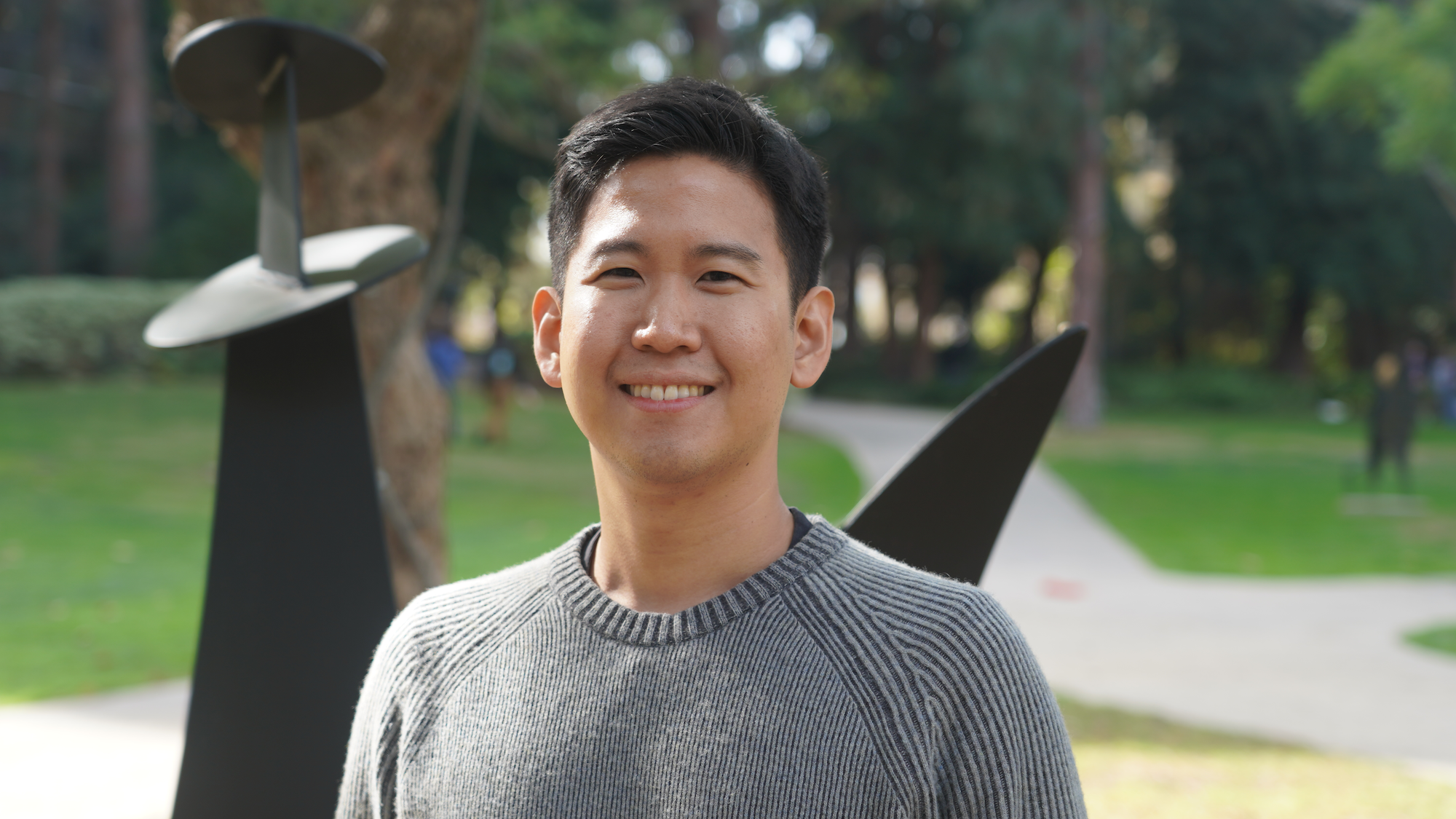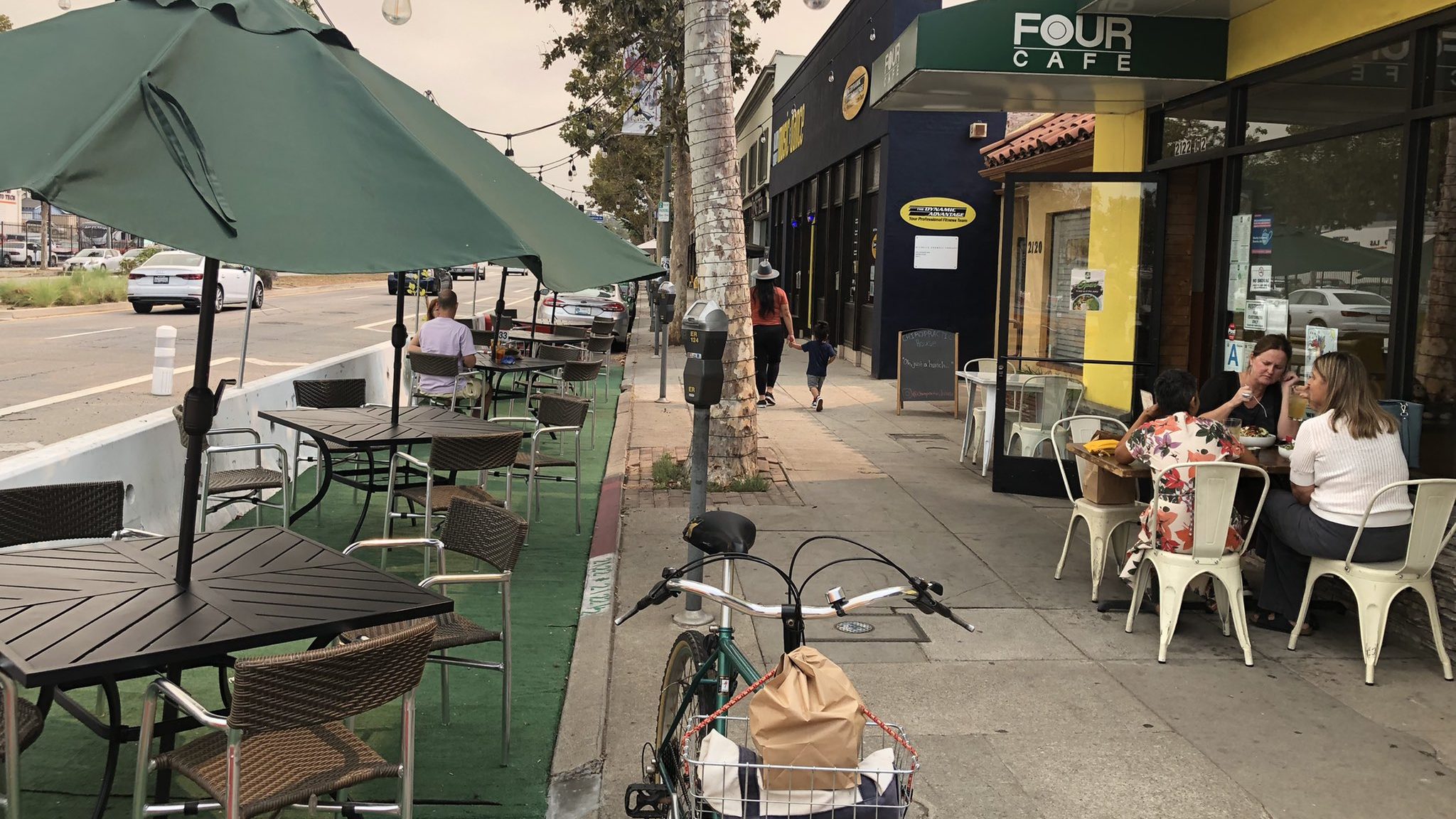
Narrow sidewalks, high speed limits restrict L.A. outdoor dining opportunities
In the wake of stay-at-home orders and government shutdowns imposed at the onset of the COVID-19 pandemic, restaurants resorted to take-out or delivery options in order to stay afloat. According to the California Restaurant Association, this transition proved difficult for small businesses and local restaurants: One in three California restaurants closed during the pandemic.
In response, Los Angeles launched LA Al Fresco, an outdoor-dining program that allowed restaurants to serve patrons on designated sidewalks, parking lots, and streets. This program relaxed previous regulations and lengthy approval processes by expediting the approval of applications and eliminating costs to apply. Recognizing the disproportionate effects of COVID-19 on communities of color, the city also pledged to direct 55% of resources to businesses owned and operated by Black, Indigenous, and people of color; or in neighborhoods that experienced significant pandemic-related job losses.
Almost two years later, a new report by the UCLA Lewis Center for Regional Policy Studies uncovered the disparities within LA Al Fresco participation. The researchers examined the relationship between eligibility for LA Al Fresco opportunities in the public right-of-way and the sidewalk and street conditions across the city. Using municipal sidewalk and speed limit data, the researchers analyzed 977 miles of commercial sidewalks across Los Angeles.
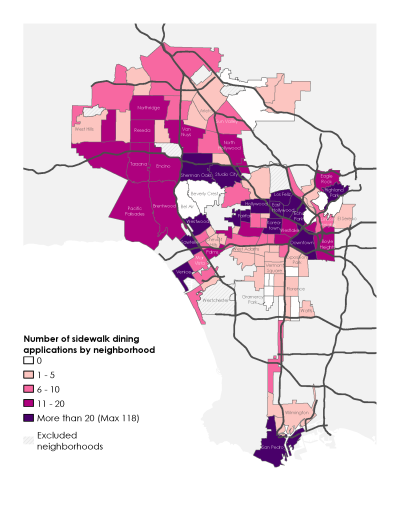 Among the findings, the report indicated that sidewalk width is the key barrier to participation. Narrow sidewalks limit business participation in LA Al Fresco’s sidewalk dining option, as they constrain the flow of pedestrian traffic and restrict ADA access. In addition, more than half of the city’s sidewalk dining applications were concentrated in 11 neighborhoods — mainly those with higher median incomes and predominantly white residents.
Among the findings, the report indicated that sidewalk width is the key barrier to participation. Narrow sidewalks limit business participation in LA Al Fresco’s sidewalk dining option, as they constrain the flow of pedestrian traffic and restrict ADA access. In addition, more than half of the city’s sidewalk dining applications were concentrated in 11 neighborhoods — mainly those with higher median incomes and predominantly white residents.
The presence of both narrow sidewalks and high-speed streets reduce eligibility for curbside dining. Higher-income and majority-white areas with wider sidewalks had a greater stretch of sidewalks eligible for LA Al Fresco sidewalk dining within their commercial districts.
The authors included recommendations and adjustments to LA Al Fresco as the city considers more-permanent outdoor dining features:
- Find opportunities to widen sidewalks in commercial districts, prioritizing lower-income communities of color.
- Keep in mind that businesses likely need additional support to participate in the program.
- Require technical specifications to ensure applicants maintain ADA clearance.
- Reduce speed limits along commercial corridors and reconsider curbside dining speed limit guidelines.
Improving Access to Outdoor Dining Opportunities: Analyzing the Constraints of LA Al Fresco was authored by Lewis Center deputy director Madeline Brozen, graduate student researchers Shinah Park and Elena Hernandez, and urban planning professor and Lewis Center director Evelyn Blumenberg. For interactive maps of the broader street and LA Al Fresco trends, visit the data page.

